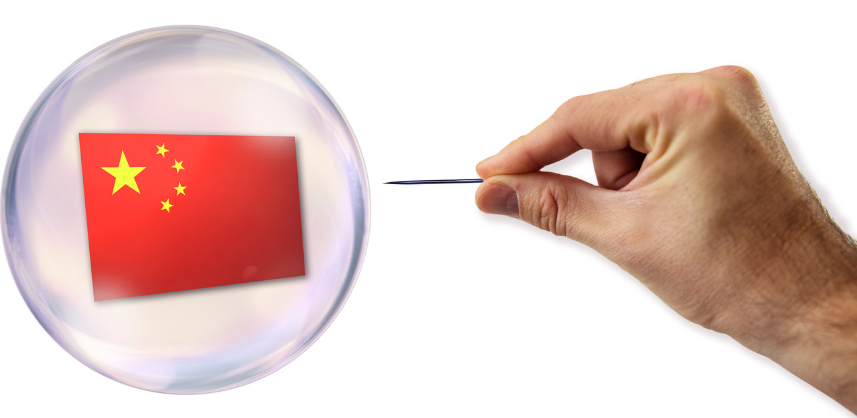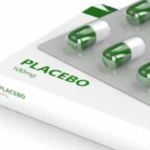- Know Labs (KNW) is a blatant and obvious medical device scam, claiming to be able to non-invasively measure glucose without skin penetration, which has never been done.
- KNW has been pitching their device, the “Bio-RFID”, to investors since 2018, but there still aren’t any peer-reviewed publications about its design or performance.
- We interviewed a medical sensor expert who researched the Bio-RFID device and concluded that it wouldn’t work consistently in clinical settings. He said: “the dielectric constant of salty water in the skin dominates any meaningful isolation of a glucose-specific signal”.
- KNW claims the Bio-RFID works but hasn’t reported any 3rd party tests or studies outside of the company.
- Other firms are further along than KNW in this area of research but are still miles away from FDA approval.
- KNW has no collaborations with respected medical or academic institutions, and there aren’t any influential people behind its technology.
- The only doctor working for KNW is a 76-year-old guy who has 4 other jobs, and who has never invented anything. There are also zero doctors on its Board of Directors.
- KNW’s CEO, Phillip Bosua, and its Chairman Ronald Erickson, have no medical experience.
- KNW conducted NFT sales in Q421 and Bosua richly profited from it, using his personal Coinbase account. Additionally, over $1M worth of Ethereum was transferred to an unnamed “consultant.”
- KNW has another 60M shares that can be diluted from options, warrants, preferred shares and convertible bonds – some just got registered yesterday. The preferred shares and convertible debt have exercise prices as low as 25c per share.
- KNW and its related companies have wasted over $100M of investors’ money, failing all of its inventions and products for over 20 years.
- Know Labs (KNW) is a blatant and obvious medical device scam, claiming to be able to non-invasively measure glucose without skin penetration, which has never been done.
- KNW has been pitching their device, the “Bio-RFID”, to investors since 2018, but there still aren’t any peer-reviewed publications about its design or performance.
- We interviewed a medical sensor expert who researched the Bio-RFID device and concluded that it wouldn’t work consistently in clinical settings. He said: “the dielectric constant of salty water in the skin dominates any meaningful isolation of a glucose-specific signal”.
- KNW claims the Bio-RFID works but hasn’t reported any 3rd party tests or studies outside of the company.
- Other firms are further along than KNW in this area of research but are still miles away from FDA approval.
- KNW has no collaborations with respected medical or academic institutions, and there aren’t any influential people behind its technology.
- The only doctor working for KNW is a 76-year-old guy who has 4 other jobs, and who has never invented anything. There are also zero doctors on its Board of Directors.
- KNW’s CEO, Phillip Bosua, and its Chairman Ronald Erickson, have no medical experience.
- KNW conducted NFT sales in Q421 and Bosua richly profited from it, using his personal Coinbase account. Additionally, over $1M worth of Ethereum was transferred to an unnamed “consultant.”
- KNW has another 60M shares that can be diluted from options, warrants, preferred shares and convertible bonds – some just got registered yesterday. The preferred shares and convertible debt have exercise prices as low as 25c per share.
- KNW and its related companies have wasted over $100M of investors’ money, failing all of its inventions and products for over 20 years.
We at White Diamond Research have exposed many medtech duds through the years. You can see them listed in the track record section on our website. Some of them have been truly bizarre scams. Such as one company with a device that claims to make a woman’s vagina tighter (Viveve Medical: VIVE), and one that has a device that gives an electric tingle to the tongue to treat brain damage (Helius Medical: HSDT). However, one of the most blatant and obvious medical device scams we’ve come across is Know Labs (KNW).
KNW’s only product is a medical device technology it calls “Bio-RFID”. The company claims that its Bio-RFID can accurately monitor a patient’s blood glucose levels non-invasively. This sounds like a medical solution to a huge medical need, but in reality it is fiction, a story based on unverifiable claims. Although it has been tried for years, there hasn’t been any successful blood glucose monitors without sticking a needle through the skin. KNW’s Bio-RFID performance claims aren’t credible because the company hasn’t done any 3rd party studies, all of their studies have been done internally. There also haven’t been any peer-reviewed papers written on it. Plus, the company and its leadership have a history of technological “breakthroughs” that wasted investor dollars and ended in failure.
There is nothing there with this company, it’s an empty promotion. And that makes it unable to work with any institution or serious medical professional, because there isn’t even the potential for its product to work, and any medical expert can see that.
Know Labs Only Doctor Is Not An Innovator
There are no medical experts behind KNW’s technology. Their Board of Directors, for example, does not have any doctors or people with medical sensor experience. The only employee with an MD is their Chief Medical Officer, Dr. James H. Anderson Jr., MD, who is 76 years old. He joined KNW in 2018, a few months after the Phil Bosua was appointed CEO. You can see that he is the only key executive of KNW with the “Dr.” prefix:

Source: Yahoo Finance
It’s also clear that Dr. Anderson isn’t focused on KNW, as he currently works at four other companies as shown on his LinkedIn profile.

Source: LinkedIn
Being the only medical professional in the company, shareholders are betting on this guy to make a medical discovery that no one has ever been able to do before. Looking at Dr. Anderson’s history, he doesn’t seem like an innovator. He’s never been a part of creating any inventions or making scientific discoveries.
Phillip Bosua, Know Labs CEO, Has No Medical Experience
The following is Phillip A Bosua, KNW’s CEO, from his LinkedIn Profile:

Source: LinkedIn
Bosua was appointed CEO of KNW on 4/10/18. He previously served as the Chief Product Officer since August 2017. He was likely hired to be the “pump CEO” as he doesn’t have any medical experience, and the company hasn’t made any technological advancements since he was hired.
From September 2012 to February 2015, Mr. Bosua was the founder and Chief Executive Officer of LIFX Inc. (where he developed and marketed an innovative “smart” light bulb). Bosua left LIFX in 2015. From Feb 2016 to July 2017, Bosua was the founder and CEO of RAAI, inc., where he continued the development of his smart lighting technology.
In 2018, RAAI Lighting, which Bosua was the sole stockholder, merged with KNW. Bosua was issued 2M shares of KNW in the deal, worth about $520K at the time, for the intellectual property. It appears that RAAI Lighting was a failure, as KNW doesn’t mention doing any further research and development of the technology since the merger.
Ron Erickson, Chairman and Founder of Know Labs
Ronald Erickson of KNW also has no background in medical technology. He took over as CEO of KNW in 2003 when it was called “Starberrys Corporation”. He was previously CEO and Chairman of eCharge Corp, a company that performed web payment services. He was also a co-founder of BlueFrog Media, a startup provider of ringtones and interactive television services. After fetching $15M from venture capitalists in 2005, it went into Chapter 7 bankruptcy in 2008 in a spectacular “Blue Frog Mess.” Mr. Erickson founded Visualant, that became Know Labs. Of interest is the collection of failed “breakthrough” inventions from Visualant, including ChromaID scanner and TransTech products. We put together a longer list of failed products from KNW and related companies later in this report.
Know Labs Massive Upcoming Dilution
On 9/16/22, KNW got uplisted from the OTC exchange to the NYSE. In conjunction with the uplisting, KNW did a public offering of 4.14M shares at $2 each. Immediately after the offering, the company’s basic outstanding shares totaled about 48M. On 9/20/22, the company issued 289.9K warrants at an exercise price of $2.40.
KNW has had a staggering 150x increase in basic shares outstanding in the past 10 years alone, from a split-adjusted 280K shares in Q1 2012 to 48M shares today. That’s what the company shows in its financial reports, however it doesn’t include a potential additional 60M shares from in the money options, warrants and convertible debt.
The following table shows KNW’s total fully diluted shares:

Source: Q2 2022 10-Q Filing
If all of the above instruments are converted into stock, that puts a total of 108M full diluted shares. That would make the company’s market cap at $1.40 per share a whopping $150M+!
For more details on the Preferreds and Convertible notes, in particular with the tiny 25c conversion price, see below:


Source: Dilutiontracker.com
These notes and preferreds just got registered yesterday. KNW filed an S-3 on 12/2/22 that seeks to register the warrants, all the preferred stock, and 4,284,000 shares issuable upon the conversion of debt.
The convertible note is fully owned by pennystock investor Clayton A Struve and Ronald Erickson. As shown in the Q222 10-Q, each investor owns about half, as shown below:

Source: KNW Q222 10-Q
Know Labs Flagship Product – A Non-Invasive Glucose Monitor
In this video from 8/6/18, KNW shows a video of Tyler Odenthal, who is the co-inventor of the Bio-RFID technology. Odenthal is using both the standard of care device, the DexCom G5 blood glucose monitor, which you need to stick into your skin to get the reading, and Bio-RFID at the same time. It’s suspicious that the company doesn’t use an actual diabetic patient for this demonstration, but the biased co-inventor.
At the beginning of the video, KNW’s CEO, Phil Bosua says:
“While we are a small OTC company today, we’ve just invented a holy grail of the biotech industry, non-invasive blood glucose monitoring.
We’re super excited about this discovery. Even though we know it’s a multi-billion dollar opportunity, we’re really excited we’ll be able to help millions of people around the world. So we’re hard at work, getting this to the next stage as fast as possible.”
In December, 2018, an article reporting a KNW presentation stated:
“In the video presentation Company CEO Phil Bosua discusses the Company’s breakthrough technology, details the product strategy for deploying the technology in to the marketplace and addresses the significant scope of the market opportunity for Know Labs.”
The article quotes Bosua:
“we think our new technology will be the catalyst for the creation of this industry as the future on personal health because we invented the world’s first non-invasive blood glucose monitoring platform.”
Bosua made these statements four years ago, and the company still hasn’t “deployed the technology into the marketplace” as he claimed. In fact, the company still hasn’t done any clinical trials yet, or even a third-party verification. So it still hasn’t gotten to the next stage since 2018. Yet KNW had decided to uplist to the NYSE earlier this year before accomplishing anything meaningful.
Know Labs NFT Sales Last Year Were Made, And Expensed, Through the CEO’s Coinbase Account
KNW is otherwise a non-revenue company. However, in Q421 KNW made $4.35M worth of revenues from the sale of NFTs.
The following is one of the company’s NFTs sold:

Source: opensea.io
Suspiciously, the sale of these KNW NFTs were done through Bosua’s own Coinbase account. We believe that account should be audited and all transactions related to the NFT sales should be documented, to see if any embezzlement was committed.
From KNW’s Q322 10-Q:
The Company used the digital wallet and Coinbase account of the Company’s CEO… All proceeds received from the sale of NFT were deposited in the CEO’s personal digital accounts.
Even worse, the CEO was paid almost $800K compensation for the NFT revenue. And the CEO paid through his digital asset account $1.075M to an unnamed “consultant.” A whopping 43% charge of the NFT sales went to the CEO and paid to a consultant through the CEO’s Coinbase account.
From the Q322 10-Q:
As of June 30, 2022 accrued expenses-related party include $799,353 of unpaid compensation that was due and payable to the CEO for the NFT revenue. This unpaid compensation was paid in July 2022. During 2021, approximately $1.3 million of the selling and transactional costs for the digital assets was paid through the CEO’s personal digital asset account including approximately $1.075 million which was paid to a consultant via the transfer of Ethereum.
Furthermore, why wasn’t the NFT profits used to further Bio-RFID’s path to FDA approval?
There Is No External Evidence That The Bio-RFID Device Works
KNW introduced its Bio-RFID technology in 2018. The company claimed to immediately make progress towards FDA approval, but the reality is it hasn’t done anything other than make videos to entice investors. From the 2018 10-K:
“We expect to begin the process of obtaining US Food and Drug Administration approval of our non-invasive continuous blood glucose monitoring device during calendar year 2019.”
However, that has not happened. KNW is still in the same spot today as they were in 2018, with only internal studies done.
KNW’s investor presentation, published on 11/18/22, states that the company is still doing pre-FDA studies, as it shows on page 11:

Source: KNW November Investor Presentation
And it’s even worse than the above diagram makes it out to be.
There is a June 2021 announcement of external validation with no revealing of the test data. The announcement states:
“In the past, we’ve rarely spoken publicly about our test results,” said Phil Bosua, Know Labs CEO. “Our energy has been on our research priorities here in the lab. But now we would like to share what we know is a significant milestone – independent verification from a respected research institution that our Bio-RFID technology works.”
The research institution wasn’t named and a verification report is nowhere to be found. KNW could’ve just made it up.
Why wasn’t a proper external validation study ever performed? It is unlikely that cost is an issue – this would be a very simple, inexpensive study, which would be less costly than the glamorous animations the company has created to pump their stock on YouTube. We believe the true reason for not performing external validation is that the technology does not perform similar to the standard of care.
No Non-Invasive Glucose Monitoring Device Has Been FDA Approved
This recent scientific review from Sage Publications published in January 2022 discusses 30+ non-invasive technologies. With regard to Bio-RFID, it only references two PRs from Know Labs – there are no peer reviewed studies for Bio-RFID!
Regarding NIO-GM (Noninvasive optical glucose monitor) products, it states:
No NIO-GM product has received clearance by the United States Food and Drug Administration (FDA). Although both direct and indirect noninvasive glucose measurements bear the burden of establishing measurement accuracy, this burden can be greater for indirect methods owing to the lack of a selective signature originating from the glucose molecule… Measurement accuracy over time represents the major analytical challenge of all NIO-GM technologies.
In regards to the last sentence in the above quote, there is NO evidence of measurement accuracy over time in KNW’s white paper. All graphs “proving” similar performance of the Bio-RFID and benchmarks lack time scale. As shown below one of the graphs on page 10:

Source: KNW White Paper
As shown above, it doesn’t state how fast the Bio-RFID measures the glucose. It doesn’t state any units of time. This was done on purpose to hide inferior response time of the Bio-RFID – something that makes it useless for real time glucose monitoring, which must respond quickly with a reading for it to be useful.
In KNW’s November 2022 presentation, it reveals some details about the Bio-RFID. The following, slide 8 from the presentation, compares Bio-RFID with the standard of care glucose sensor, the Dexcom G6.

Source: KNW November Investor Presentation
The above slide gives an example of a raw signal from the Bio-RFID sensor, as shown on the left with a noisy orange bump. This bump is remarkably different in shape in comparison with the signal from the Dexcom G6 sensor. Moving one graph from left to right and “the magic” happens. The noisy signal is gone and the refined Bio-RFID signal is a perfect match of the Dexcom curve.
Because conventional signal filtering cannot achieve this magic transformation, KNW throws into the mix “feature engineering and AI data science”, which is a “secret sauce” of Bio-RFID. While we believe that anyone can match the shape of a specific glucose signal with the a processing algorithm (“feature engineering”), we question that this fixed algorithm would match various glucose signals required for a practically meaningful glucose sensor. In other words, there is no value in an algorithm that only matches one glucose curve, as required for an investor presentation. KNW confirms our guess by bringing up an AI savior. Because no human brain can figure out such an algorithm, KNW hopes that AI will somehow figure it out. If finnicky AI fails, investors are sent a disclaimer, which to our astonishment states the following:
“Past performance is not indicative of future results. There is no guarantee that any specific objective will be achieved.”
The first part of this disclaimer, “Past performance is not indicative of future results” is directly taken from a financial ad describing unpredictable behavior of stocks and financial returns. It is a laughable statement in relation to the performance of a glucose sensor, presumably governed by the law of natural science. This strictly speaking means that nothing in KNW’s technical files is reproducible. The second part of the statement, “There is no guarantee that any specific objective will be achieved”, is equally scary. This states that KNW has not yet achieved any specific objective in relation to the Bio-RFID product. If that is so, what did they do with all the investors’ money? Clearly, KNW is aware of forthcoming litigation risks with the presented data, so they are “a bit overdoing” their disclaimer.
Know Labs Foundational Patents Are Wordy And Vague
KNW claims multiple patents. We examined the two most recent “foundational” patents. Both are as vague as all of the other technical info about Bio-RFID and are likely written by a hired patent clerk. It’s very wordy but vague which makes this patent easy to issue but totally irrelevant for practical protection of technology.
A Medical Sensor Expert Looked Into The Technology Behind Bio-RFID – And Explains Why It Wouldn’t Work
The patents do, however, allow one to get an insight into the “miracle” technology behind the Bio-RFID product. It is based on a pair of transmit/receive antennas operating at RF and low MW frequencies. The glucose content is inferred from the signal transmitted, which is an unsophisticated dielectric spectrum method in comparison with other RF/MW glucose sensors. Bio-RFID looks across a range of frequencies and attempts to isolate some ‘signature’ of glucose. However, there is no such glucose signature at these frequencies – only at THz and above does the glucose molecule have any specific distinct spectral resonances.

Fig . A diagram of the electromagnetic (EM) spectrum and its relevance to glucose. NIR, near-infrared; MIR, mid-infrared; FIR, far-infrared.
This means one can only indirectly measure changes in the tissues of the body in response to glucose when using the MW/RF spectrum. Because the dielectric constant of salty water in the skin is so much more massive than any other organic material in the range from MHz to 10s of GHz, the capillary dilation and temperature variations dominate, throwing away any meaningful isolation of a glucose-specific signal. In other words, the problem with all measurements of glucose using RF and MW techniques is an enormous variability and complexity of the human body that obscures any weak signal from a glucose change. To overcome the limitations of MW/RF sensing, others have employed more sophisticated designs in comparison with the Bio-RFID design.
For example, BioXensor, developed by GlucoRx and Cardiff University researchers, uses a much more sophisticated resonator based differential and temperature-corrected data fusion method to try to tease out only the glucose response. It is still far from being ready to be commercially used. While several clinical studies are mentioned on its website, none are published so far.
Another similar resonant sensor from Afon Technology is also still in development (see pages 26, and 27 of this magazine) with no published peer reviewed clinical data available. It has a much more suitable team than KNW, with five doctors.
Other available reviews of RF/MW glucose sensors, as described in this recent Nature article, published on 9/16/20, confirms that this technology, despite decades of promise, remains in research prototyping mode and have not been validated in the clinical studies.
It states:
“However, most of these RF systems are not practicable for immediate in-house usage by diabetics due to their cost, complexity, size, and weight…most of the published resonance-based sensors lack the frequency resolution required to capture the practical range of diabetes glucose levels.”
It is, therefore, prudent for an investor to question KNW’s leadership statements about Bio-RFID. With no peer reviewed publications, dated design described in the patents and, as we explained, the shady past of its founders, this technology reminds us of the blood testing saga from Theranos with the only exception that KNW is much less efficient in bringing high caliber promoters. Both companies, though, claim some miracle results from their secretive technologies that are far ahead of the rest of the industry.
Know Labs Has A 22 Year History Of Failed Concept Products
KNW has attempted many different businesses that have all failed through the past 22 years. The following is its history of concept products, commercial failure and decline:
- 2000: Company was originally called “Cigar King Corporation” that sells “high quality cigars through a climate controlled kiosk merchandising display case.”
- 2002: Did a reverse merger with a Nevada shell company. The name was changed to “Starberrys Corporation”. This was an attempted acquisition of the Colour By Number (CBN) System, a digital color management system to empower designers, consumer and others “to take full control of their choice and use of color”.
- 2004: Changed named to Visualant (OTC; VSUL) and began developing a colour matching tool for fraud detection. Called this product “Spectral Pattern Matching” and attempted to commercialize it in the US and Japan.
- 2009: Visualant still not going anywhere. Not a dollar of revenue in the product’s history.
- 2010: Acquired TransTech, a distributor of access control products for law enforcement. Claimed $10M in annual revenues at announcement. Visualant said it would scale TransTech.
- 2013: Company pivots to new product: ChromaID – “Invented a way to project light at a material and measure the amount of light reflected back”.
- 2017: After 14+ years as a public company, TransTech provides substantially all of the company’s revenue and is declining.
- 2018: Changes name to Know Labs. Also invents Bio-RFID, a non-invasive blood glucose monitoring technology
- 2019: TransTech revenues decline to zero.
- 2020: Forms subsidiary to focus on medical device commercialization
- 2021: Begins selling NFTs using the CEO’s personal accounts.
- Q2 2022: Digital asset sales from CEO’s personal accounts cease. Revenue returns to zero.
From the company’s long history, KNW has had two name changes and five unsuccessful attempts at finding a business of some kind (Colour By Number, fraud detection, access control, medical devices, and AI-generated NFTs). It has had peak annual revenues of $8.7M, mostly from the acquired TransTech business. Its Q2 2022 run rate revenue is zero. It has had an accumulated deficit of $95.8M.
Conclusion
KNW appears to be an egregious scam. Medtech companies like AXDX and BSGM, stocks we’ve written bearish reports on, are able to work with institutions like the Mayo Clinic because they have a technology that does what they say it can do, but just isn’t practical in the real world. KNW doesn’t even have a product that does what it says it can do. It’s a total fraud. Therefore, we don’t believe we’ll ever see any collaborations from any real scientists or medical institutions.
We believe that KNW’s Bio-RFID device is a joke. It is not able to reproducibly measure glucose concentration like a standard commercial sensor. It relies on AI, which is confirmation that the sensor is unable to figure it out using sensor hardware and the signal processing algorithm alone. We doubt KNW will submit for FDA approval or publish in a peer reviewed journal. They are only trying to promote the stock.








